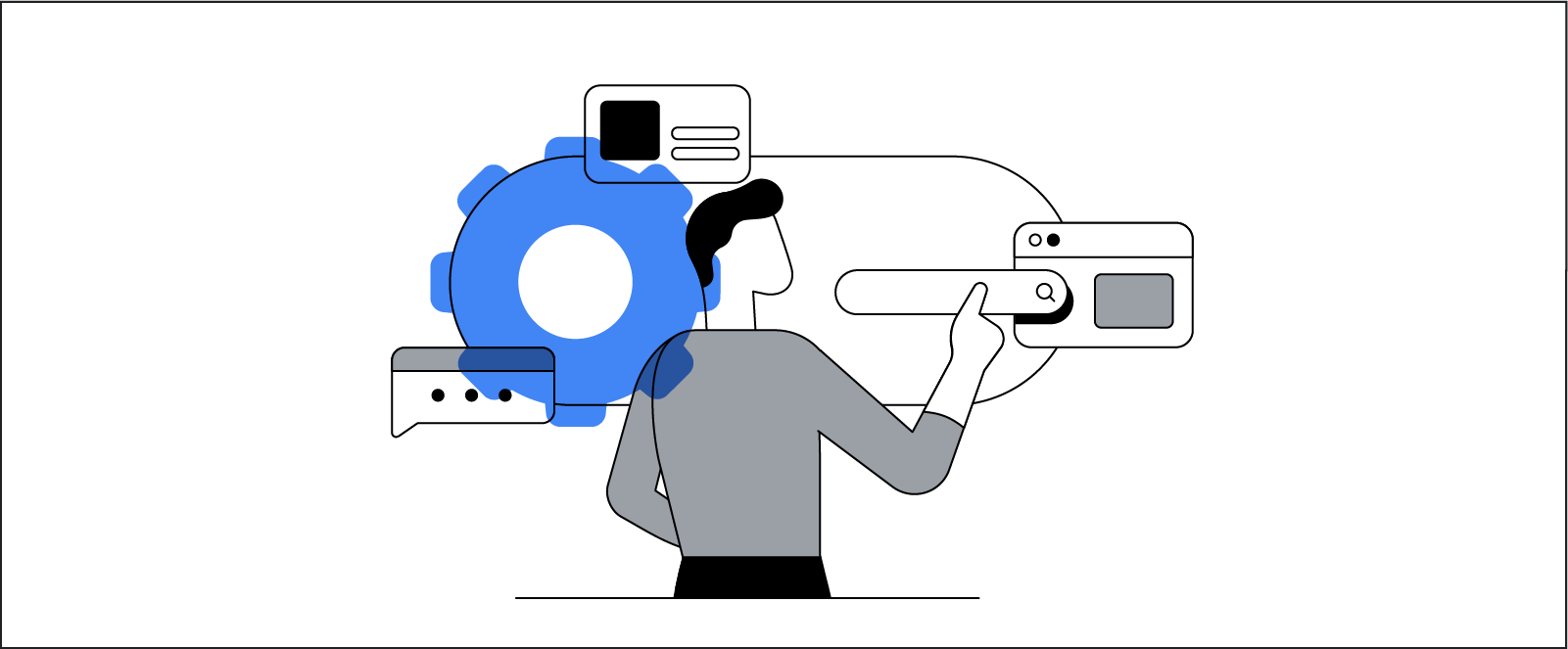Jeremy Hull, iProspect’s senior VP of innovation, explains how automation has become the foundation for successful search marketing.

Search is a medium unlike any other. Search marketing is a demand-driven connection point, an opportunity to engage in individual conversations at scale, and an incredibly complex ecosystem of interconnected functions. That’s why search marketing enthusiasts (like myself) find the channel endlessly fascinating.
A good search marketing strategy is a finely tuned machine that connects someone’s intent to an ideal response. A great search marketing strategy uses automation to constantly improve and become more efficient and effective over time.
However, search marketers as a whole have been slow to embrace automation. We’ve been burned by overhyped proprietary bidding algorithms, amused at poorly generated ad text, and misled by promises of real-time automation that misrepresent data processing lag times. What’s more, there’s still lingering resentment among many search marketers about the way each new tool seems to take away more manual control. If you find yourself nodding along with these concerns, we’re in the same boat. I remember having heated discussions about this as far back as 2013.
When advertisers avoid using automated tools, they’re operating with a mindset that’s been outdated for more than 20 years.
Despite past challenges, the time has come to reevaluate search marketing automation. When advertisers avoid using automated tools for search marketing, they aren’t just missing out on incremental performance, they’re also operating with a mindset that’s been outdated for more than 20 years, which given recent market and consumer disruption, is no longer sustainable.
Today’s tools have matured, providing more control, transparency, and tangible business performance than ever before. What’s more, real-time automation is the foundation of the entire ecosystem of search. Automation transformed search from an analog concept (resembling a physical directory) to a dynamic digital medium, allowing it to grow beyond a small catalog of curated sites to an always-on, cross-device experience capable of delivering almost any type of content a user is looking for.
Complex but not complicated
Search marketing isn’t complicated, but it is complex. The complexity grows exponentially every time a new feature is added, because each intent signal has to be considered in conjunction with all others. Search engines aggregate dozens — even hundreds — of data points for each interaction to serve the most personalized and relevant experience in both paid and organic results. Automation is the key to harnessing those signals.
As one example, iProspect used Google’s auction-time bidding and seasonality adjustments in Search Ads 360 when Levi Strauss & Co. challenged us to drive both higher revenue and more web traffic during the 2019 holiday season. Smart Bidding, combined with data-driven attribution, gave us the ability to adjust keyword bids for every single query based on its unique combination of contextual signals, ultimately increasing traffic by 25% and last-touch revenue by 21% year over year. While those are results any team would be proud of, I’m even more impressed by the efficiency gains unlocked by automation, which managed to decrease nonbrand cost per click (CPC) by 19% and brand CPC by 21%.
Failures or misunderstandings?
Current automation tools don’t work in every instance, but savvy digital marketers won’t dismiss a tool due to a single failure. Instead, they’ll analyze what happened and figure out whether the failure was due to the tool itself or a misunderstanding of how it works. In IT troubleshooting parlance, this type of error is called PEBCAK: “Problem Exists Between Chair and Keyboard.”
Sometimes a misunderstanding is due to confusion around the tool’s name. Powerful features can get mixed up in a sea of acronyms. Repurposed terminology can cause confusion as well. I’ve spent many a meeting explaining to traditional marketers that a search marketing campaign is an ongoing structural element, not the sort of flighted buy typical of traditional advertising.
Current automation tools don’t work in every instance, but savvy digital marketers won’t dismiss a tool due to a single failure.
Other times, poor results are due to marketers not using the tool correctly. For instance, many bidding and budgeting tools don’t respond well when marketers attempt to combine automated and manual management. While testing one tool earlier this year, we discovered that changing a campaign’s daily budget paused all automated bidding for seven days while the system rebuilt a new baseline. After learning this, our team reworked daily processes to unlock the tool’s benefits.
The best approach is to understand a tool’s strengths and weaknesses, and align it with relevant use cases — or save it for future opportunities.
When we launched Google’s Discovery campaigns for Urban Outfitters, iProspect used lessons from previous tests to try a new approach. We broke out Urban Outfitters’ Discovery ads by audience, creating separate campaigns for first-party audiences, third-party audiences, and custom intent audiences. This approach enabled us to quickly see how performance differed for each segment. While first-party audiences drove 100% of the revenue for Discovery ads, third-party audience campaigns delivered a 35% higher click-through rate than the other two segments, and custom intent audiences saw a 42% lower CPC than the previous structure. By continuously testing and challenging our preconceived notions about Discovery ads, the iProspect team found a way to pivot our strategy seamlessly between driving revenue, traffic, efficiency, or any combination of the three.
Test, learn, and implement
I understand how tempting it is to feel like you can manage all of this complexity manually. I’ve gone down the same path many times. Ten years ago, I created a budget optimization spreadsheet with a nested “IF” formula so complex that I discovered the maximum character limit for an Excel cell (it’s 32,767, by the way). This solution worked, but when I found a tool that delivered 90% of the same functionality in an easy-to-manage user interface, it was an easy call to make the switch.
When it comes to search marketing, automation enables marketers to scale their messages and strategies across a massive audience while simultaneously delivering personalized results and optimized performance. If you’ve been burned by automated tools in the past, now is the time to revisit today’s solutions with an open mind and find the right combination that will take your campaigns to the next level.
We hope you found this article useful. Please, feel free to leave a comment.
Source: Think With Google
